Kumeyaay (Kumiai) ancestral traditions survive among groups in the isolated canyons of the Tijuana River watershed, high in the Baja California peninsula. They harvest acorns and pine nuts, hunt rattlesnake and small animals, collect grasses to weave baskets. As encroaching civilization brings electricity and running water, they still allow a glimpse of what life in Southern California before the Spanish arrived was like.
![[CRESPIAL- BFV] "Cuchumá: La montaña sagrada de Tecate" (México)](https://wilderutopia.com/wp-content/plugins/wp-youtube-lyte/lyteCache.php?origThumbUrl=https%3A%2F%2Fi.ytimg.com%2Fvi%2FOLcJQaKzuX4%2F0.jpg)
Watch this video on YouTube
“Cuchumá: La montaña sagrada de Tecate” — Video on the sacred site of Tecate Mountain sacred to the K’miai culture (in Spanish)
Ancient Ways and Modern Times
By Joe Mozingo, Los Angeles Times
Reporting from the Sierra Juarez Mountains, Mexico — In the high table land, a small, rawboned woman picks her way across ash and sand to a cave where she slept as a girl when her family came to harvest pine nuts every August. Teodora Cuero is 90 years old (deceased in 2014), half-blind behind her sunglasses, with skin like crinkled wax paper. She moves her fingers over the lichen-mottled rock, and the memories flood her with emotion. She talks of lost friends and family members, how they used to live. Her friend Mike Wilken, an anthropologist, listens with rapt attention. What she describes are final scenes from the Indians’ ancient yearly migration between the sea and desert, a pattern of life in Southern California and northern Baja long before the Spanish set foot here.
STORY:Tongva-Chumash Indigenous Legacy: Intergenerational Wisdom for our Times
The territory of Cuero’s people, the Kumeyaay, extended along the coast from what is today Carlsbad in the north, to the Santo Tomas Valley in Baja in the south, and over the mountains to the desert. The international boundary that was drawn across that terrain would put the tribe on separate trajectories. So unlike the many native peoples of Southern California whose language and customs were extinguished, hers found a measure of refuge in the remote, dusty valleys just south of the border.
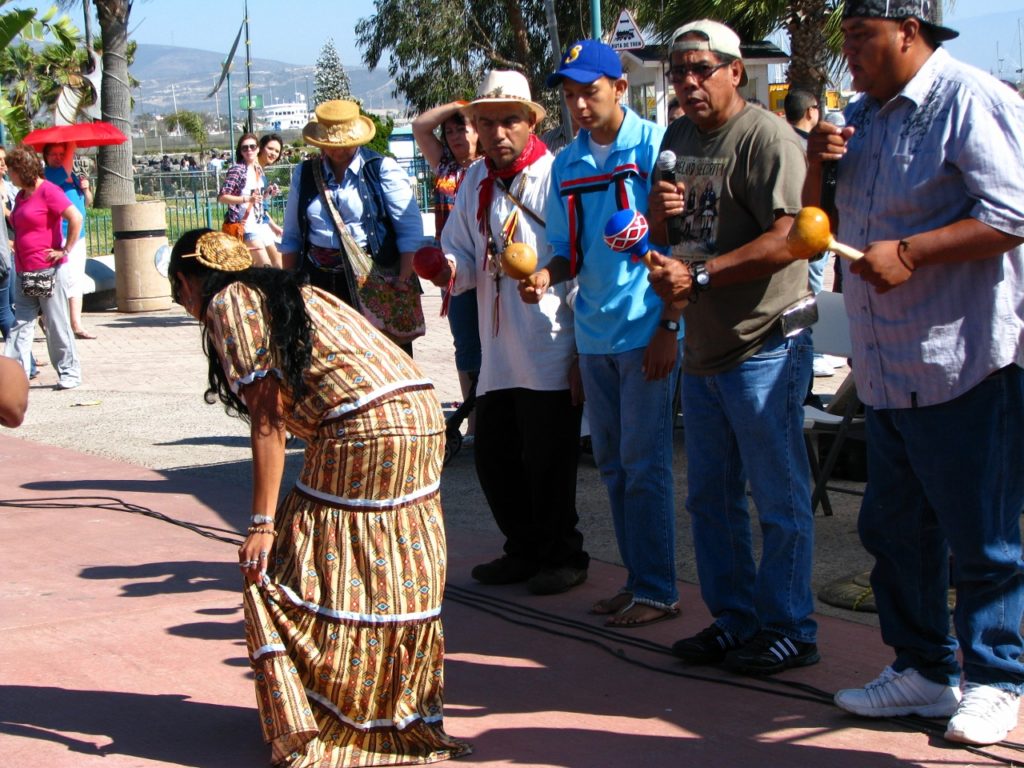

Ancient ways remained not only relevant but necessary to get by in areas that had few staples from the modern world. They endure in many forms today. No one embodies this more than Cuero, who didn’t have shoes and spoke only Kumeyaay until she was a teenager, living 80 miles from downtown San Diego. Today she lives in a rock house for which her husband traded a horse, speaks mostly Kumeyaay, cooks on an antique wood-burning stove in the garden, uses plant remedies for ailments and relies on food she gathers from the land to supplement her rice and beans. Goats and horses roam the dirt roads of her village, La Huerta, which got electricity seven years ago.
STORY: Cultural Fire: Native Land Management and Regeneration
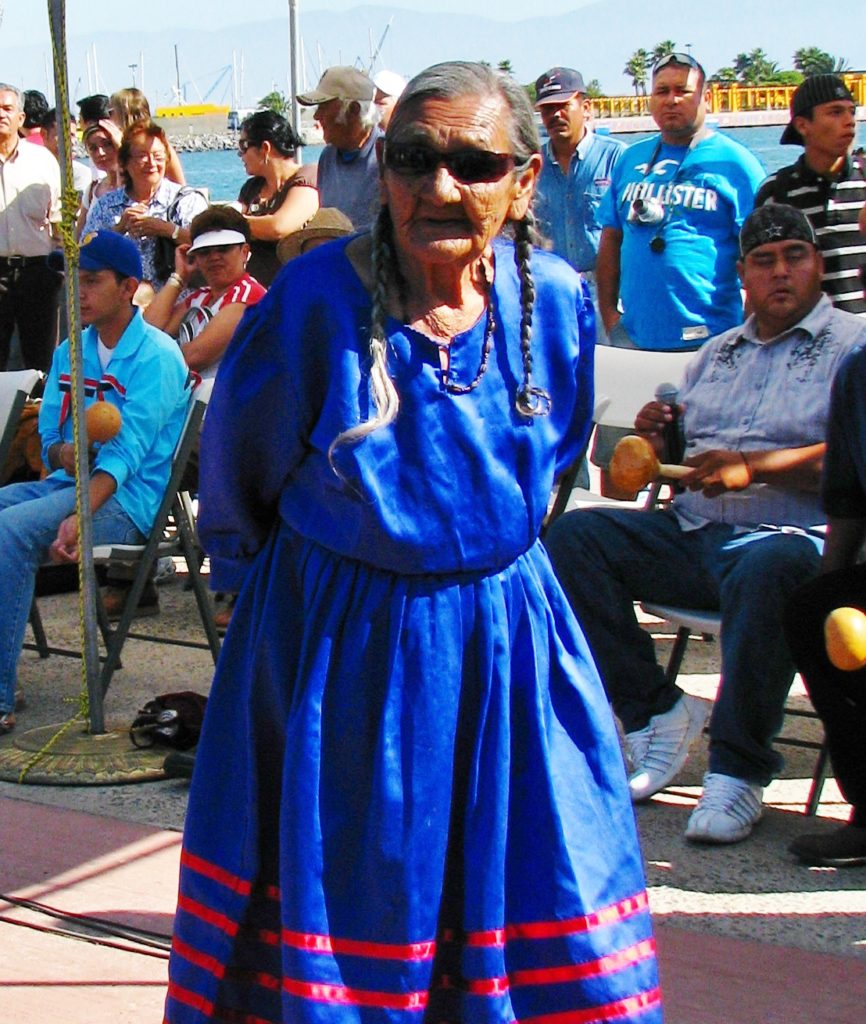

Her life is not a simple snapshot of the past, but a complex amalgam of old and new. Cuero has a cellphone and refrigerator. She naps on a bench seat extracted from a recently deceased Ford pickup. She drinks inky black coffee and smokes Marlboros.
Over the last three years, Wilken has worked with Kumeyaay elders like Cuero to document their language and those traditions they adapted to the times. His material goes to a National Science Foundation project on documenting endangered languages and a museum in Tecate he helped establish.
“There are certain stories people want to hear about the Indians,” Wilken said. “That they are living a way of life that hasn’t changed in thousands of years. They want to know about shamans and go to a sweat lodge. We have to get over some pre-formed idea of who they are and experience them as they are.”
He began working with the Kumeyaay 15 years ago as an “applied” anthropologist, meaning he not only studied them but worked with them to make endangered traditions more useful to them. He helped find markets for their basketry and native medicines, and arranged cultural exchanges with the Kumeyaay in the United States, who wanted to learn more about their heritage. “When people from the California communities meet Kumeyaay from Baja they say, ‘This is how we lived 50 or 100 years ago,’ ” Wilken said.
STORY: Baja California: An “Earthly Paradise” in the Desert
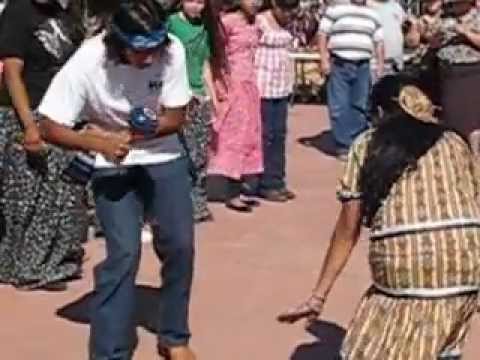
Watch this video on YouTube
The First People of Northern Baja California
The Kumeyaay greeted the first Spanish expedition in California in 1769. They had been here for at least 1,300 years, anthropologists say, maybe many thousands more. The Kumeyaay lived in temporary brush huts and moved throughout the year in search of food. While many ended up in the Spanish missions and later on reservations, many others did not. Into the early 20th century, clans of outliers still roamed the margins of the expanding Yankee society, following their old trails, speaking little English or Spanish and crossing the border without even knowing there was one. Their exile was searingly documented in the autobiography of Delfina Cuero, who was born near Jamul in 1900 and told her story to an anthropologist in the 1960s.
From Terra Peninsular, a group working to save the wildernesses of Baja California. http://vimeo.com/39679963
As a child, Delfina, a cousin of Teodora Cuero’s father, followed her parents around San Diego County, looking for ranch work while hunting and foraging. They collected shellfish and crabs on the rocks of Point Loma. They speared fish in the coastal waters and harvested greens and roots from the black mud of what is now called Mission Bay. In spring, they went to the desert for agave stalks, which they roasted in pits for food. In summer, they moved to the mountains to collect pine nuts, then down into the valleys for acorns in fall.
When her father had ranch work, they would build a brush hut in a nearby arroyo. But as more and more ranches were cleared, ranchers told them to go away. They lost access to the coast, then Mission Valley, then the foothills. Their migration routes were cut off.
“We went farther and farther from San Diego looking for places where nobody chased us away,” Delfina wrote. “Most of the people we knew went down [to Baja] hunting for different food and they found a place where no one told them to move on, so they just stayed there.” Delfina’s family settled in an out-of-the-way canyon south of Tecate.
STORY: Corazón Vaquero: Last of the Californio Cowboys of Baja California
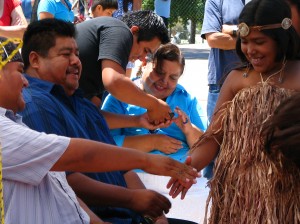

Kumeyaay Traditions
More than 5 million people now live in the Kumeyaay’s original territory. But only about 65 Kumeyaay speakers remain in the area, all but a handful south of the border. On a warm afternoon, a Kumeyaay woman unhooks a rusty barbed wire loop along a cattle fence, entering an oak-shaded canyon. Beatriz Carrillo is 58, tall and thin, with long, black hair and high cheek bones. She has an elegance, a smiling tranquillity.
She walks along, looking for material to make baskets. She spots a patch of rush — with stalks like tubular reeds — and tugs one, then another, just hard enough that they pop out but do not break. She lays them in a bundle.
Carrillo grew up and lives in the village of San Jose de la Zorra, a dusty outpost 12 miles from the condo-crammed coastline south of Rosarito Beach. Until a few years ago, the villagers carried their water from a creek and used oil lamps. Now they have electricity and running water from a well, and can get a faint cellphone signal in a resident’s windowsill.
The village is loosely spread out among big live oaks, which they harvest for acorns every November to make into a mush. Carrillo’s mother was born here and spoke only Kumeyaay. Her father, a shepherd, was Paipai, a tribe to the south, whose language is related to Kumeyaay.
Carrillo learned basket weaving from her mother and grandmother. When Wilken met her, only she and seven other women still did it, and it was sporadic at best. Wilken knew of high-end collectors of California Indian basketry and helped find events where the women could sell their works. He arranged for Carrillo to travel to the Viejas Indian Reservation to teach basket weaving.
Now, the better artisans can make a few hundred dollars for a woven plate and, on rare occasions, up to $5,000 for a large basket. With this incentive, their daughters and granddaughters have taken it up. Carrillo goes home and spreads the rush stalks on the ground to dry. She sits next to her daughter Marisol under the mulberry tree. The late afternoon light has the cast of early fall. Chickens saunter about and children play barefoot in the dirt.
Marisol starts weaving a basket with red and dun-colored fibers. The interlacing is tight and precise, radiating out from a single point like a snail shell. A friend of Carrillo stops by, and they chat in Kumeyaay. Their children can mostly understand them, but they cannot speak it. The grandchildren don’t understand much at all. “The language is being lost,” says Carrillo. “I worry about that.”
STORY: Kuuchamaa: The Exalted High Place of the Kumeyaay
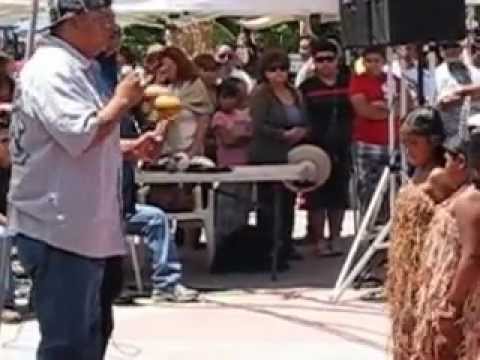
Watch this video on YouTube
Sacred Sites, Ancestral Knowledge
Up at the cave, Cuero ignites a bundle of sage with a yellow Bic lighter. She wears sunglasses to hide a glaucous eye. Across the high plateau, towers of boulders rise like dripped wax above the pinyon pines.
The journey to the cave each August took two days on foot and burro. They threaded up a shallow valley of red shank and silver sage. On the mesa, they greeted a cluster of “dancing pines,” which according to lore got lost on their way to a dance long ago when trees and animals acted like humans.
Her mother and grandmother taught her about the plants along the way. A red shank rinse eased a toothache. Elderberry flowers reduced a fever. Buckwheat blooms settled an upset stomach. And later in whispers: Woolly blue curls were for ladies trying to seem chaste who, as she says now, “needed to tighten things up.” She laughs and adds, “So I hear. I never used it.”
They camped at the cave for shelter from summer thunderstorms. The Cucapa came up from the Colorado River to join them in the harvest. Peddlers with wood carts sold sundry items, namely tequila. The river people were great singers and on Sunday they all danced together. The men hunted rabbits, quail and deer. The children climbed the trees and shook the branches to knock the pine cones down. Then they all roasted the cones to get the nuts out.
The decomposed granite is still black with the soot of hundreds, maybe thousands, of years of fires. Red pottery shards are scattered over it. Now her people come occasionally to harvest in pickup trucks and go home the same night. She sweeps the sage smoke against the cave rock to cleanse it.
“Here you are still,” she says. “We’ve come to see you. I’ve brought friends to get to know you.” She starts to cry, deeply, and sings a song in Kumeyaay to the cave and her parents. Then she sits with Wilken and has coffee from a thermos and smokes a Marlboro.
“I used to come here with a lot of people,” she says. “Now I’m the only one left. When I’m gone, it’s finished.”
Updated 1 April 2024

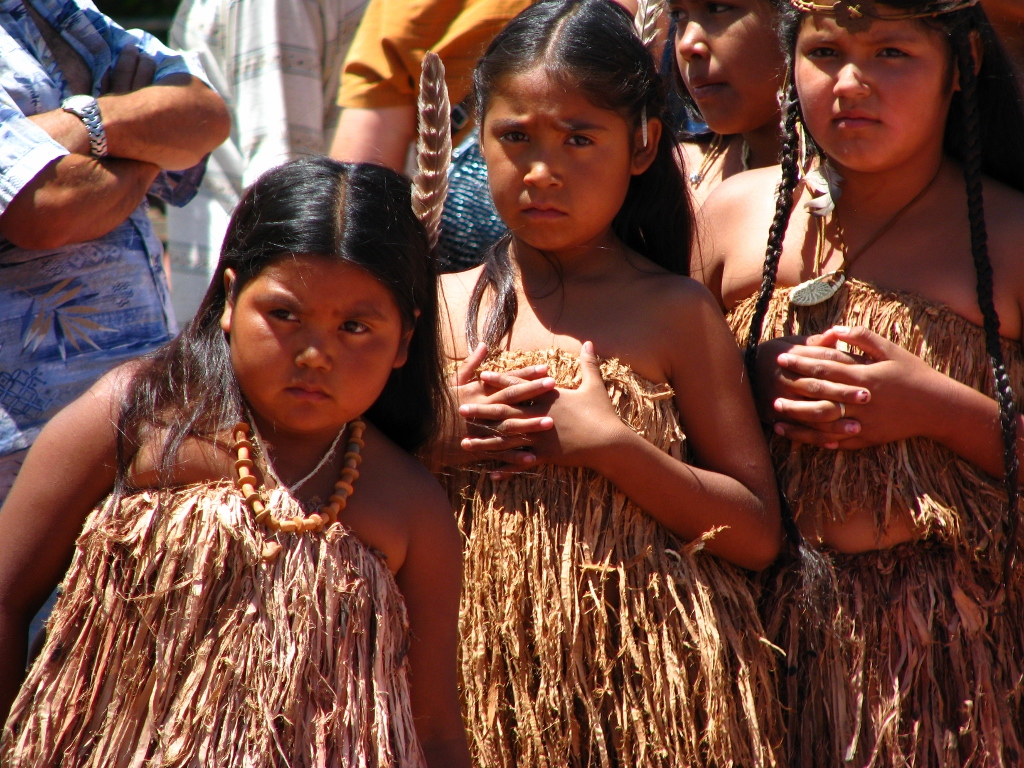








Pingback: Baja California: An "Earthly Paradise" in the Desert | WilderUtopia.com
Pingback: Baja California
I’m part Akawa’ala, or Paipai. I migrated to australia 25 years ago and have been tryung to connect with my culutre. This story is as beautiful as its sad. I would love to learn my traditional language and culture and have been trying for years. Everyone near should take the time to learn, so our culture isn’t lost
Pingback: Corazón Vaquero: Last of the Californio Cowboys of Baja California | WilderUtopia.com
Pingback: Kuuchamaa: The Exalted High Place of the Kumeyaay | WilderUtopia.com
Pingback: Kumeyaay People: Traditions Survive in Baja California | Friends of Rose Creek
Pingback: Mexique / Etats-Unis : Le peuple Kumiai ou Kumeyaay – Peuples autochtones d'Abya Yala
Pingback: Des langues et des hommes : Les langues yuman-cochimí – Peuples autochtones d'Abya Yala
Pingback: Indigenous Regeneration: Remembering the Past to Inspire the Future
Pingback: Tecate Mexico: The Only Magical Town of Baja California
Pingback: Tecate Mexico: The Only Magical Town of Baja California » Savoteur
Pingback: America’s most endangered rivers of 2024